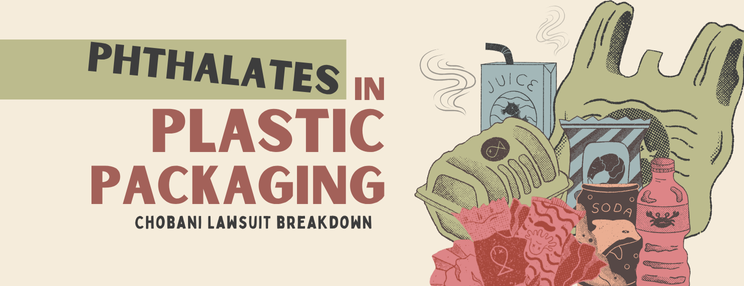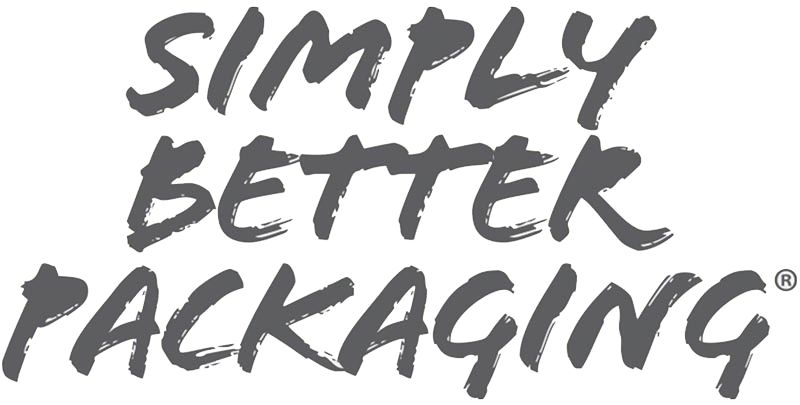Phthalates in Plastic Packaging—Chobani Lawsuit Breakdown

In April 2025, a class-action lawsuit was filed against Chobani after an independent research organization found phthalates in certain yogurt products in December 2024. The containers advertised “only natural ingredients,” which the lawsuit claimed mislead customers, as it contradicted the results of independent testing. The testing found traces of four different phthalates, which the suit alleges likely came from the plastic polypropylene container, as phthalates are commonly used as a catalyst for bonding polypropylene molecules. While all of these are permitted for food contact applications, the suit was filed based on false advertising.
The plaintiff is seeking damages, refunding the class (all other qualifying U.S. customers affected), punitive damages, attorney costs and fees, and to legally enforce Chobani from continuing these violations. If Chobani loses, they would be required to either change the packaging material or the advertising on it. Chobani filed a motion to dismiss in June, but the court has yet to issue an order. The outlook for the case is still unclear.
The Chobani case reflects a growing trend in consumers demanding transparency from businesses, especially relating to anything that could affect their health. Some predict that the outcome of this trial could indirectly lead to stricter disclosure guidelines regarding packaging. This could also bring changes in marketing tactics to avoid consumer skepticism of ambiguous terminology like “natural.”
What Are Phthalates?
Phthalates, or “the everywhere chemical,” are chemicals used to make plastics more flexible, transparent, and durable, also known as a “plasticizer.” They’re common in products like household items, personal care, and food packaging. Phthalates enter the body through eating or drinking, using cosmetics, getting an IV, or inhaling dust from products containing them. They’re uncommon in standard food packaging materials, but a study by Consumer Reports in 2024 found phthalates in almost every food tested. This is because phthalates enter food from a variety of outside sources, and it is nearly impossible to avoid.
Currently, the FDA allows the use of nine phthalates in plastics in contact with food, like in production or containers, but are not authorized to be directly added. However, they are still on the list of chemicals in food under FDA review. The FDA denied a petition in 2022 to ban all phthalates in food contact applications, citing a lack of evidence that dietary exposure exceeded a safe level.
Many phthalates are linked to various health problems in study, but causal evidence has been more difficult to establish in humans for most of them. Experiments on rats saw that DBP and DEHP damaged their reproduction systems, DINP caused tumors and developmental problems, BBP may have caused cancer, among other findings. However, there’s insufficient evidence at this point to say that these chemicals affect humans the same way. Studies have found an association between certain phthalates and reproductive problems, thyroid problems, some kinds of cancer, obesity, social impairment in children, etc.
What Should YOU Do?
Almost everyone is exposed to phthalates and it’s impossible to completely avoid all kinds. But, if you’re concerned, there are ways to limit your exposure. You can read product labels on personal care for the acronyms (i.e. DHEP or DiBP) of different types of phthalates, although rarely are they clearly stated. “Fragrance” in these products can mean phthalates added to make scents last longer. Use microwave-safe, phthalate-free containers for heating food and beverages. Choose wooden or cotton children’s toys over flexible plastic options. If you believe you’re experiencing health complications related to phthalate exposure, seek guidance from a healthcare provider.
Placon’s Role
PET (polyethylene terephthalate) is considered the “gold standard” for food packaging safety and doesn’t contain any phthalates. Most food packaging is chemically designed in a way that minimizes the need for phthalates, like HDPE (high-density polyethylene), PP (polypropylene), and LDPE (low-density polyethylene), all which Placon manufactures packaging in without phthalates. Placon products are Safe Quality Food Packaging certified and adhere to the high standards of safety, quality, and sustainability required by the food, retail, and medical industries in producing plastic packaging, and uses recycled post-consumer PET.
Sources
Toxic Man-Made Chemicals Found in Certain ‘Natural’ Chobani Yogurts, Class Action Lawsuit Alleges
Phthalates: Uses, Safety Concerns, How to Read Labels
Chobani Endocrine Lawsuit: What’s Really Inside America’s Favorite Yogurt – Kbsd6
Does My Plastic Food Packaging Contain Phthalates? – Inline Plastics
Phthalates in Food Packaging and Food Contact Applications | FDA
What Are Phthalates and How Do They Affect Your Health? – National Center for Health Research
In rats, perinatal exposure to phthalates impairs brain structure and function | ScienceDaily
ABOUT PLACON
Since 1966, Placon has been a leading designer and manufacturer of innovative and sustainable plastic packaging for medical, food, and consumer goods markets. Placon has manufacturing operations in Madison, WI; West Springfield, MA; Elkhart, IN; and Plymouth, MN, and is currently ranked in the Top 20 in Plastics News 2024 Thermoformers Rankings. Placon delivers packaging breakthroughs that inspire better engagement between people and products.




